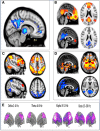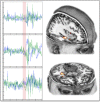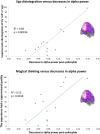The entropic brain: a theory of conscious states informed by neuroimaging research with psychedelic drugs
- PMID: 24550805
- PMCID: PMC3909994
- DOI: 10.3389/fnhum.2014.00020
The entropic brain: a theory of conscious states informed by neuroimaging research with psychedelic drugs
Abstract
Entropy is a dimensionless quantity that is used for measuring uncertainty about the state of a system but it can also imply physical qualities, where high entropy is synonymous with high disorder. Entropy is applied here in the context of states of consciousness and their associated neurodynamics, with a particular focus on the psychedelic state. The psychedelic state is considered an exemplar of a primitive or primary state of consciousness that preceded the development of modern, adult, human, normal waking consciousness. Based on neuroimaging data with psilocybin, a classic psychedelic drug, it is argued that the defining feature of "primary states" is elevated entropy in certain aspects of brain function, such as the repertoire of functional connectivity motifs that form and fragment across time. Indeed, since there is a greater repertoire of connectivity motifs in the psychedelic state than in normal waking consciousness, this implies that primary states may exhibit "criticality," i.e., the property of being poised at a "critical" point in a transition zone between order and disorder where certain phenomena such as power-law scaling appear. Moreover, if primary states are critical, then this suggests that entropy is suppressed in normal waking consciousness, meaning that the brain operates just below criticality. It is argued that this entropy suppression furnishes normal waking consciousness with a constrained quality and associated metacognitive functions, including reality-testing and self-awareness. It is also proposed that entry into primary states depends on a collapse of the normally highly organized activity within the default-mode network (DMN) and a decoupling between the DMN and the medial temporal lobes (which are normally significantly coupled). These hypotheses can be tested by examining brain activity and associated cognition in other candidate primary states such as rapid eye movement (REM) sleep and early psychosis and comparing these with non-primary states such as normal waking consciousness and the anaesthetized state.
Keywords: 5-HT2A receptor; REM sleep; consciousness; criticality; default mode network; entropy; metastability; serotonin.
Figures








Comment in
-
Commentary: The entropic brain: a theory of conscious states informed by neuroimaging research with psychedelic drugs.Front Hum Neurosci. 2016 Aug 30;10:423. doi: 10.3389/fnhum.2016.00423. eCollection 2016. Front Hum Neurosci. 2016. PMID: 27624312 Free PMC article. No abstract available.
References
-
- Abramson H. A. (1967). The Use of LSD in Psychotherapy and Alcoholism. Indianapolis, IN: Bobbs-Merrill
Grants and funding
LinkOut - more resources
Full Text Sources
Other Literature Sources
Medical

